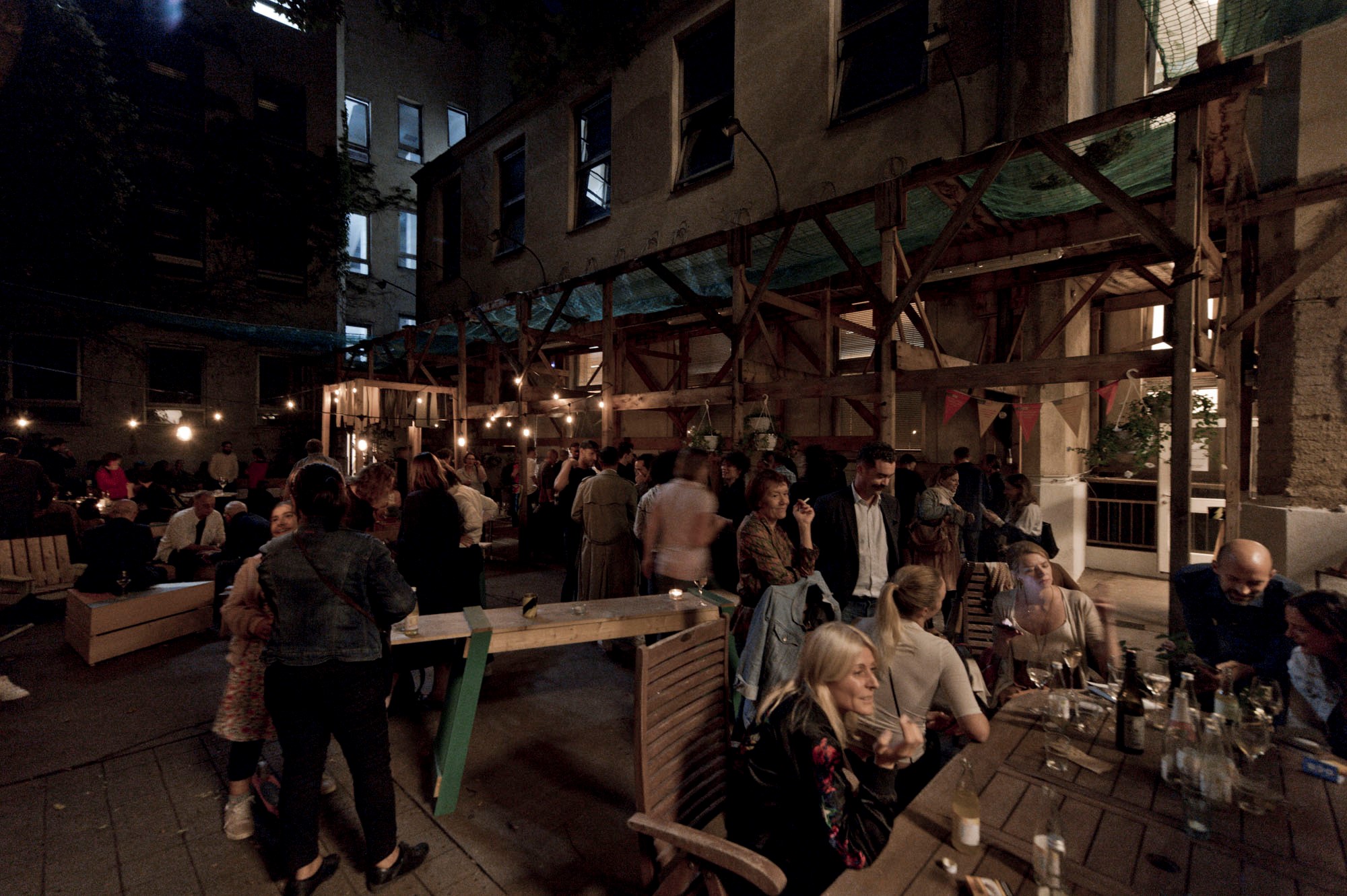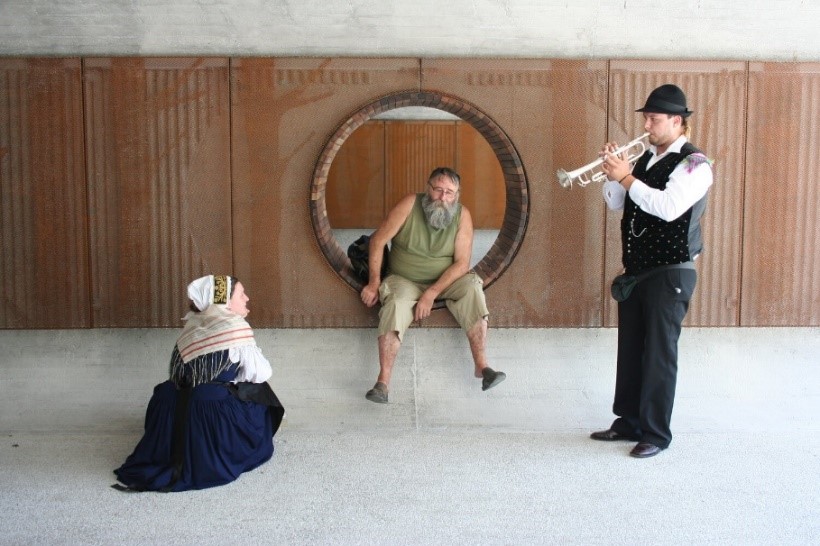Creative Cluster Margareten is a project supported by Kreative Räume Wien. It has been operational since August 2019 and is located in a former school building of approx. 3.500 m2. The project is run by a so-called ‘space entrepreneur’ and serves as a hub and workplace for around 120 users.
Creative Cluster is a non-profit organization that facilitates affordable workspace for freelancing artists from all fields and sees itself as an interdisciplinary and curated art incubator and creative breeding ground. Through activating vacant urban spaces for the creative industries and various other supportive and networking services, it is also a business hub and communication platform for creatives. An important key value is to operate as an open and diverse home for transdisciplinary and international artistic practice that lives up to contemporary global developments as well as to the local Austrian social life and its needs. Moreover, the project explores new forms of collaborative working practice and tries to build on and shape synergetic future communities.
Art Incubator since 2017
The founding of Creative Cluster goes back several years. When Karim El Seroui, architect, sculptor and painter, was looking for a new studio, he got in touch with “Kreative Räume Wien” in 2016, who arranged an appointment for him and 20 other artists with the owner of an old tractor factory on the outskirts of Vienna. Because the rent was too high and the space too large (3000m2), which would only end in “uncontrolled mess” said Karim el Seroui, if used purely as a studio for artists, Karim El Seroui came up with the concept of the Creative Cluster. The idea was to bring together creative industries from all sectors and to actively promote cooperation among them, and by that not just to be a co-working space. The so-called “curating” of the artists in the location is still a carefully carried out process today.
For two years starting in 2017, forty artists and cultural workers found a home for their creative work in a former tractor factory in Floridsdorf. Karim el Seroui took on the function of a space entrepreneur. Accordingly, he not only moved into his own studio in the Traktorfabrik, but also took care of the management of the space. In addition, he supported the creative people by a collective external presentation and the realization of exhibitions and events.
First time chance for reinterpretation:
However, after selling the property and subsequent bad experiences with the landlord, they were forced to look for new real estate. At the same time as expanding into another location, the studio in the old tractor factory had to close due to the sale of the property and the resulting problems with the landlord. This successful example of temporary use also illustrates the existing difficulties and challenges of such interim use.
“Kreative Räume Wien”, which supported Creative Cluster from the beginning with legal advice, pr, networking and much more, organized in February of 2019 two viewing appointments for the interim use of an old school buillding of the city of Vienna. This was the first time, that the city of Vienna reused an old school. A total of eight different groups submitted their project ideas. The special thing about this was that the duration of the project was guaranteed for three years, but in case of premature failure of the project, it was possible for the project leader to terminate the contract prematurely. A time horizon of several years also allows for more complex measures to adapt the premises and opens up perspectives for creative users that would otherwise not be possible. In May 2019, the owner finally chose the Creative Cluster from three projects presented in more detail.

Valuable Impact:
The diverse, shared spaces such as the gym, workshop, kitchen, lounge and garden are important spatial elements for implementing this forward-looking philosophy of community-oriented art and culture work and the exploration of new urban forms of living. As part of the active shaping of urban landscapes, the creative cluster provides impulses for the productive networking of local artists and creative workers and also tries to involve all other culturally interested city dwellers through inclusive participation opportunities. This creates new qualities of living space and valuable social connections. At this point, creative energy, and artistic potential concentrates at a central place, to guarantee high quality art and other top-class creative work and be able to present to all interested people an as much diverse and innovative picture of the local creative scene as possible. Especially in times of Covid-19 and its aftereffects the role of Creative Cluster as a placemaker, that revitalizes and reorganizes public spaces and local communities for the sake of the contemporary arts and creative industries, is a crucial forward-looking social engagement that takes up responsibility for shaping future developments.
Opportunities of Revitalization
As of today, the project will run at this location until 2023 and will offer space for cultural work and exchange between art and culture professionals, businesspeople, and the surrounding population in the previously vacant building. In this way, the joint production workshop will make a valuable contribution to the cultural and educational offerings in Vienna’s fifth district. Creative Cluster focuses on art and cultural work for everyone. Therefore, interim use is an important key point as it allows for offering spaces below market value. So due to the lack of financial resources for many artists, there are not often opportunities for them to work in the city, or to create real cultural melting points, which are important not only for the artists themselves, but also for the community and the neighbourhood. For the city, this means that it can cover the running costs of the building, does not have to carry out major renovation work and they can create social and cultural added value for the city.
Together with Zita Maria Kral, who studied cultural and social anthropology, worked in the advertising industry for several years and also works as an actress and voice-over artist, Karim el Seroui manages and curates Creative Cluster today. Together they have already realised numerous socially engaged projects and cultural events. Their wish is that the Creative Cluster project becomes something permanent. With 140 artists, they are more of a “business location”, said curators Karim and Zita, who would like to see more commitment and support from the city.
To sum up, the Creative Cluster school building is a successful example for the revitalization of vacant urban spaces, independent bottom-up placemaking and decentralized, socially engaged cultural work with a focus on transdisciplinary practice and participatory strategies. “Culture should be accessible to everyone. At the same time, since the modern era, art has repeatedly removed itself from socio-political fields of tension and has often remained only for itself and a knowing avant-garde. As an urban laboratory, the Creative Cluster will give art and cultural work a stage so that it can once again make a social statement and be experienced by all. In addition, decentralized cultural work will add value and raise awareness for social togetherness.” DI Karim El Seroui, Artistic Leader Creative Cluster.
Extracted from the Research Report. Prepared by Wonderland – Platform for European Architecture.



